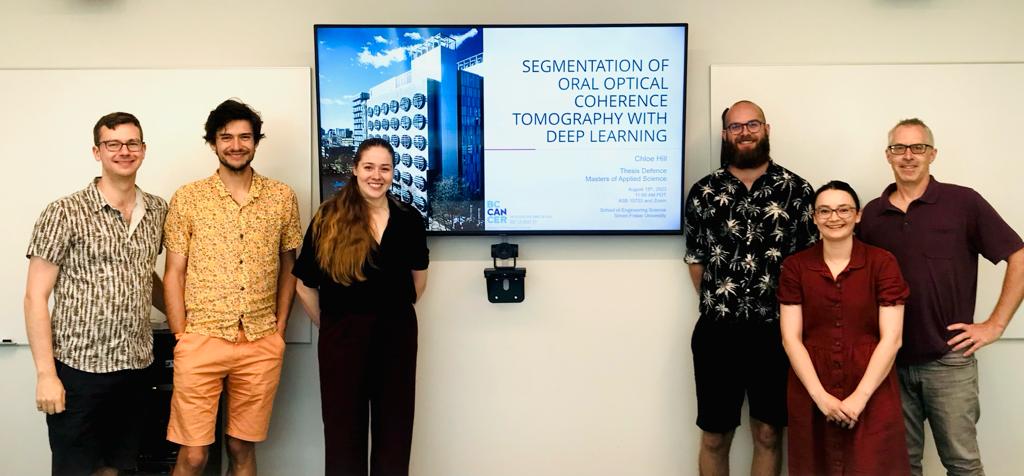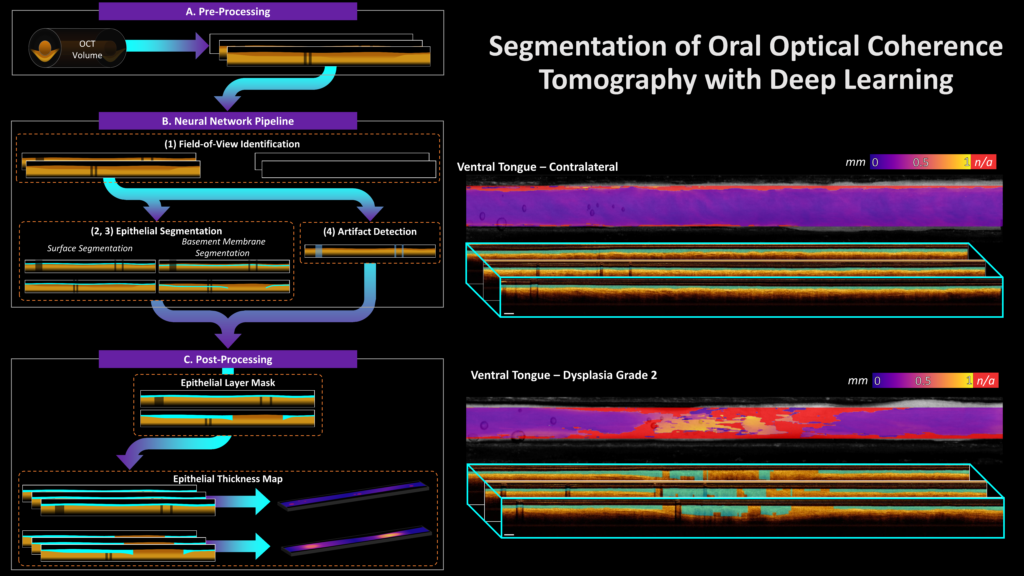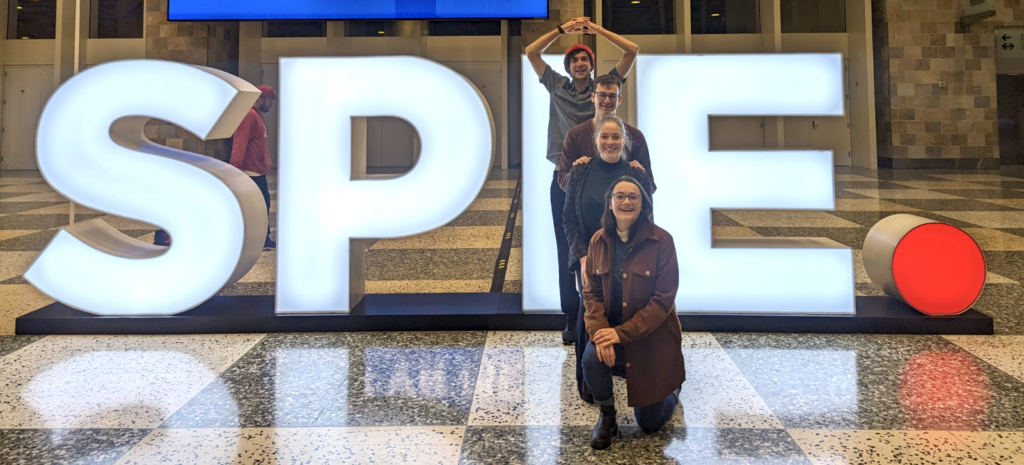
Chloe successfully defended her Master’s thesis ‘Segmentation of Oral Optical Coherence Tomography with Deep Learning‘ with no revisions, the highest level of pass at Simon Fraser University’s School of Engineering Science.
Chloe developed a four-part neural network pipeline to aid OCT interpretation by providing en face maps of epithelial depth. This allows for rapid identification of the most pathologic region in endoscopic OCT of the oral cavity, which may help identify the best site for biopsy. Chloe’s pipeline demonstrates as-good-as or better agreement than manual assessment between two raters, suggesting strong performance. Further work includes validating this tool on data acquired with a different OCT system to test generalizability.
























 Fluorescence visualization may drastically reduce local cancer recurrence by helping surgeons better visualize the diseased area around a cancerous lesion. New findings from a study nearly a decade in the making suggest fluorescence visualization during oral cancer surgery drastically improves the accuracy of the removal of cancerous tissue. This significantly reduces local recurrence rates of oral cancer.
Fluorescence visualization may drastically reduce local cancer recurrence by helping surgeons better visualize the diseased area around a cancerous lesion. New findings from a study nearly a decade in the making suggest fluorescence visualization during oral cancer surgery drastically improves the accuracy of the removal of cancerous tissue. This significantly reduces local recurrence rates of oral cancer.